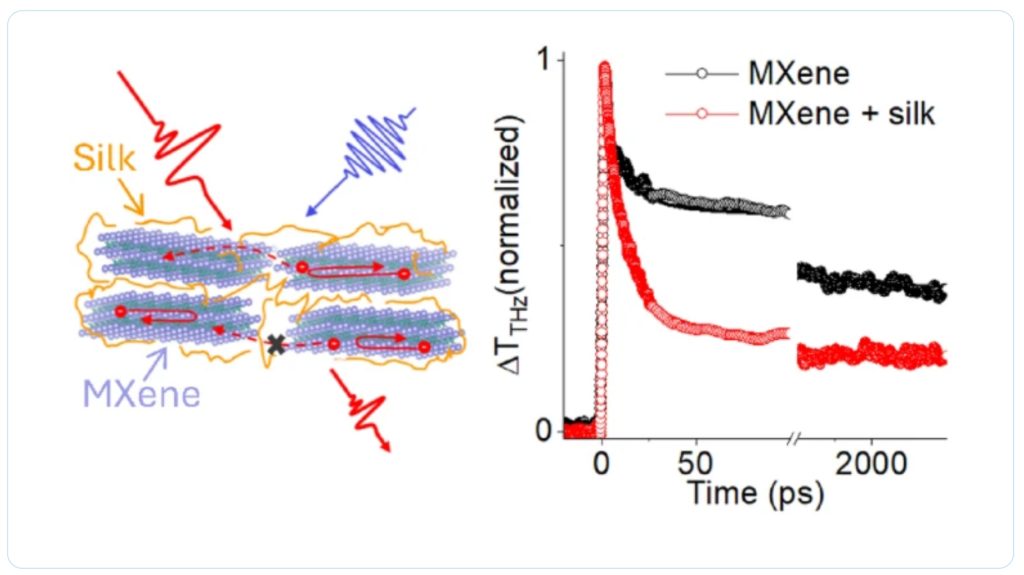Andrew Fitzgerald1, Laura Londoño Fandiño1, Kateryna Kushnir Friedman1, Tom Kohen1, Nikoloz Gegechkori1, John Obayemi2, Sepideh Khanmohammadi1, Alireza Nikbakht2, Michael Zajac1, Vladimir Gayduchkov1, Yehia Khalifa3, Joshua Uzarski4, Ivan Baginskiy5, Veronika Zahorodna5,Oleksiy Gogotsi5,6, Ronald L. Grimm3, Jeannine M. Coburn2 & Lyubov V. Titova1
Abstract
MXenes, a group of two-dimensional transition metal carbides and nitrides known for their high conductivity and stability, are promising candidates for applications in flexible and wearable electronics, as well as electromagnetic interference (EMI) shielding. In this research, we investigate MXene-silk composites using terahertz (THz) time-domain spectroscopy and time-resolved spectroscopy. Our focus is on Ti3C2Tx MXenes combined with silk fibroin films, with the goal of creating materials that have adjustable electronic and thermal properties.
While the composite films maintain electrical conductivity for those made from aqueous solutions containing up to 2 mg of silk per mg of MXene, the direct current (DC) conductivity in these films decreases by more than four orders of magnitude compared to films made solely from MXenes. However, the high alternating current (AC) conductivity in the THz range and EMI shielding efficiency are largely retained, as these properties are primarily influenced by electron transport within the flakes and are less affected by the increased distances between flakes.
Using time-resolved THz spectroscopy, we also observe that optical excitation of both pure MXene films and MXene-silk composite films leads to a temporary increase in THz transmission due to thermal suppression of conductivity, but silk encapsulation speeds up thermal relaxation. Therefore, the DC conductivity and thermal characteristics of MXene-silk composites can be effectively adjusted by varying the silk fibroin content, largely without compromising their EMI shielding performance in the THz range. This ability to tune properties paves the way for the development of biocompatible electronic materials with customizable features tailored for specific applications.
